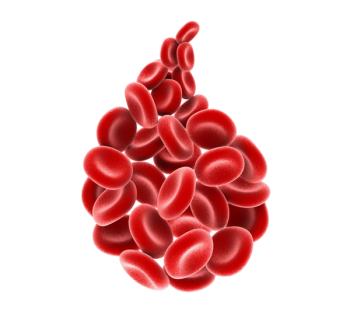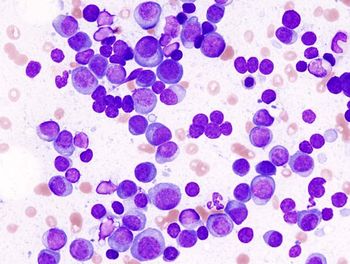
Expanding Horizons and Gaining Insights on T-DXd and Sacituzumab in Breast Cancer
Shannon L. Puhalla, MD, delves into the clinical application, efficacy, and safety profiles of T-DXd and sacituzumab govitecan for patients with breast cancer.
The treatment paradigm for both HER2-positive, HER2-negative, and hormone receptor–positive breast cancer continues to advance at a rapid pace, with many recently approved treatment options. Among the most impactful recent developments are the antibody-drug conjugates (ADCs) fam-trastuzumab deruxtecan-nxki (T-DXd; Enhertu) and sacituzumab govitecan-hziy (Trodelvy). These therapies have demonstrated significant clinical benefit, leading to improved outcomes in heavily pre-treated and metastatic settings.
To navigate the nuances of incorporating these agents into clinical practice, Shannon L. Puhalla, MD, spoke with CancerNetwork® about the pivotal clinical trial data supporting the use of T-DXd and sacituzumab across the various patient populations.
Puhalla, assistant professor of medicine at the University of Pittsburgh School of Medicine and a medical oncologist and hematologist at the University of Pittsburgh Medical Center Hillman Cancer Center, provides considerations for patient selection, monitoring for potential toxicities, and strategies for optimizing treatment outcomes with these powerful ADCs.
CancerNetwork: What specific patient characteristics or disease progression patterns might prompt earlier consideration of T-DXd or sacituzumab?
Puhalla: We certainly have some heterogeneity in our patients with HR–positive/HER2-negative/HER2-low [breast cancer]. We have [numerous] patients who can do well with serial endocrine therapies, potentially more than 2 years on a first-line CDK4/6 inhibitor. We have other patients who tend to progress more quickly, and these are the patients who don’t hit those 2 years, or maybe even are getting 1-year median progression-free survival [PFS] on their first line endocrine therapy, certainly somebody who recurs well on adjuvant therapy. That’s always a patient population where we worry.
In my mind, I look at the pace of progression, the duration of their endocrine therapy, and the amount of disease that someone has as well. If someone has a lot of bulky liver disease or pulmonary disease, that might be a situation where I’m going to opt for an earlier ADC as opposed to later. The 2 main things I look at are the amount of therapy that they’ve received, how long they’ve been on first-line endocrine therapy, and the amount of cancer that we’re dealing with.
How should clinicians interpret and act upon somatic BRCA mutations identified through liquid biopsies in the context of treatment selection for this patient population?
There is data that suggests that patients who have a somatic mutation will similarly benefit from PARP inhibitors. That’s a consideration. It’s important to note that not all mutations are the same. Certainly, we see activity with the somatic BRCA mutations, but not all homologous recombination deficiency mutations are going to respond in the same way. It’s important to look at the amount of mutational burden. If patients have [many] mutations, I tend to look at the allele frequency and see just how plentiful each mutation is when I’m thinking about targeting. If I have a situation where somebody has a somatic BRCA mutation, has a relatively high or most of their disease represents that, or has that mutation in terms of the allele frequency, often that’s a scenario where I would use targeted PARP inhibitor therapies.
How do the efficacy and safety profiles of sacituzumab, T-DXd, and Dato-DXd compare in the treatment of HR–positive/HER2-negative breast cancer based on recent trial data?
These drugs have a very similar payload. Certainly, there’s the antibody antibody-targeted differences between the sacituzumab, Dato-DXd, and T-DXd. There is overlap, not only with the antibody target, but also with the payload; however, within that, the dosing and the toxicity profile [of the drugs are] different. That’s a key thing to take away when we’re deciding which agents to use. The Dato-DXd and T-DXd, with 3-week dosing, can be [convenient] for patients in terms of getting an extra week off from the cancer center that we don’t see with the sacituzumab.
In terms of the other toxicities, there are some key differences. We see a lot of neutropenia with sacituzumab, so that’s something that you have to plan for. We can certainly see that with T-DXd as well, but it appears to be much less of an issue with Dato-DXd. Dato-DXd has issues with stomatitis that we don’t see with the other 2 agents. With DXd [backbone], we have the risk of interstitial lung disease [ILD] that we don’t see with sacituzumab. There are some key differences in toxicity, and I think that’s helpful when you’re deciding, as a clinician, looking at your patient, what agents may be best for them.
Considering the phase 3 TROPiCS-02 (NCT03901339) and the phase 3 DESTINY-Breast06 (NCT04494425) trial data, what are the key takeaways regarding the sequencing of ADCs?
What’s important to note is that we do see activity in earlier lines with Dato-DXd, whereas [with] sacituzumab, more of those patients were heavily pre-treated. There is certainly a difference in the median PFS that we’re seeing, with the perils of cross-trial comparison, that favors T-DXd [vs] sacituzumab. In terms of sequencing, I will often use T-DXd initially, because I’m hoping to get that longer initial PFS. However, it's important to understand that we see that survival advantage with sacituzumab as well, which is certainly always an important end point.
For patients progressing on CDK4/6 inhibitors, what factors influence the decision-making process between utilizing T-DXd vs sacituzumab?
In terms of the decision-making, No 1, T-DXd is a great drug for most patients. The exception to that may be patients who have [many] pulmonary symptoms at baseline, where I may be concerned that it could mask any potential ILD-type symptoms. I do tend to be a little more hesitant in that patient population when I’m choosing that drug, where I’m a little concerned about whether I can reliably assess that toxicity without having the patient getting new chest CTS all the time. That’s a situation where I may opt to use the sacituzumab.
There’s still that rare patient population that is completely HER2-0. That’s another situation where I would opt to start off with sacituzumab, where that would be my treatment of choice. If someone has any type of toxicity, I have a low threshold to switch to the other agent. It boils down to someone who has [many] baseline pulmonary symptoms, and that’s probably the patient population, as well as the complete HER2-0 [population], where I might opt for sacituzumab initially.
Looking ahead, what are the next steps for this patient population?
The next steps are to try to understand the sequencing. That question comes up a lot in the clinic. There’s a number of studies that have some early data or studies that are planned to try to examine this. Is there a reason to pick 1 agent first? Are we just looking at PFS, or are we seeing equal PFS or similar PFS when we’re doing sequencing? From an efficacy standpoint, with the similarities to the payload, it’s important to understand as well. Is there a reason to maybe put a different type of mechanism of action in between? I know I’ll do that clinically sometimes, if I'm contemplating using a serial ADC. The answer to that question is forthcoming, and I think there [are numerous] different ways that it can be approached.
Newsletter
Stay up to date on recent advances in the multidisciplinary approach to cancer.

















































































